Buyers Guide - Avionics & Radios
Whether you’re planning your avionics stack in your very first experimental aircraft or upgrading your workhorse twin, it’s essential to have the right GPS navigation and communication tools on board. But before you buy, it’s important to determine exactly which avionics make the most sense for your specific airplane and use case.

What do I need? Why do I want this upgrade?
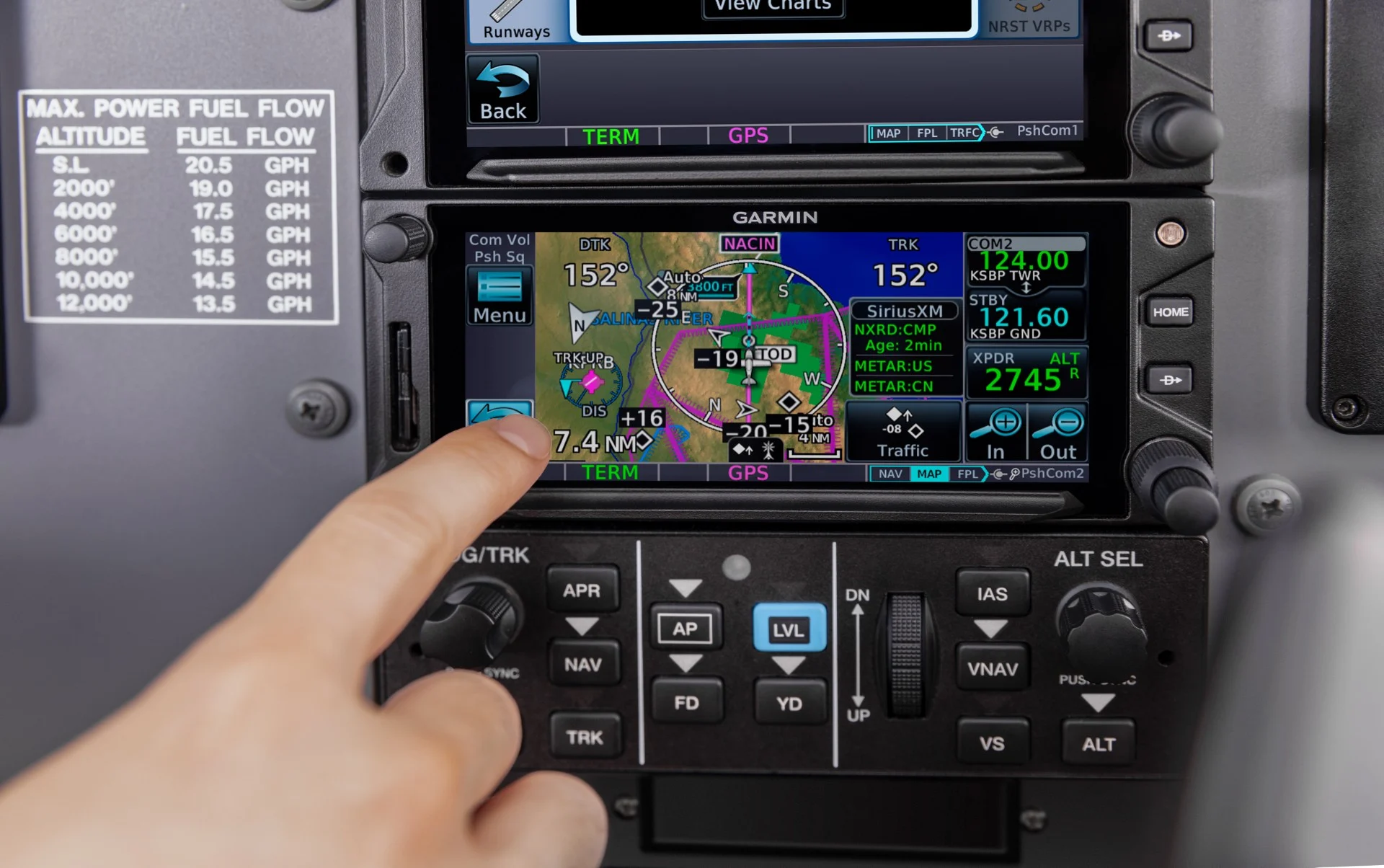
Garmin has multiple solutions and product combinations available to suit your needs.
Maybe you need a GPS (GPS 175) or radio only (GTR™ 205), or maybe you’d like to consider both (GNC® 355).
Perhaps you’re looking for the latest and greatest technology to amp up your flying — or your safety (G3X). There is certainly no shortage of options to tailor a solution to meet your exact needs. Factors, including the type of airplane, engine hours, existing avionics and planned upgrades for the whole airframe, will help you and your avionics installer determine which solutions may be the most beneficial and within your appropriate budget.
How can I reach your Customer Support team?
Email Customer Support is available at sales@flightstore.com.au. Call us on 07 5536 8694 or use our Email Enquiry Form.
What’s my flight mission?
Are you a weekend warrior looking for simple tools to help get that $100 hamburger with friends, or are you an IFR pilot who uses your plane round-the-clock for both business and pleasure? Those two realities — and the many shades of gray in between — would likely call for different solutions.
So, consider what capabilities you’ll need from your technology. If you’re only flying out for the occasional pancake breakfast, GPS navigators, such as the GPS 175, GNC® 355 or GNX™ 375, offer moving maps with handy tools, including frequency lookup, optional traffic and weather. Paired with a GTR slimline radio, you’ve got a simple, easy-to-use setup.
Where should I have my avionics installed?
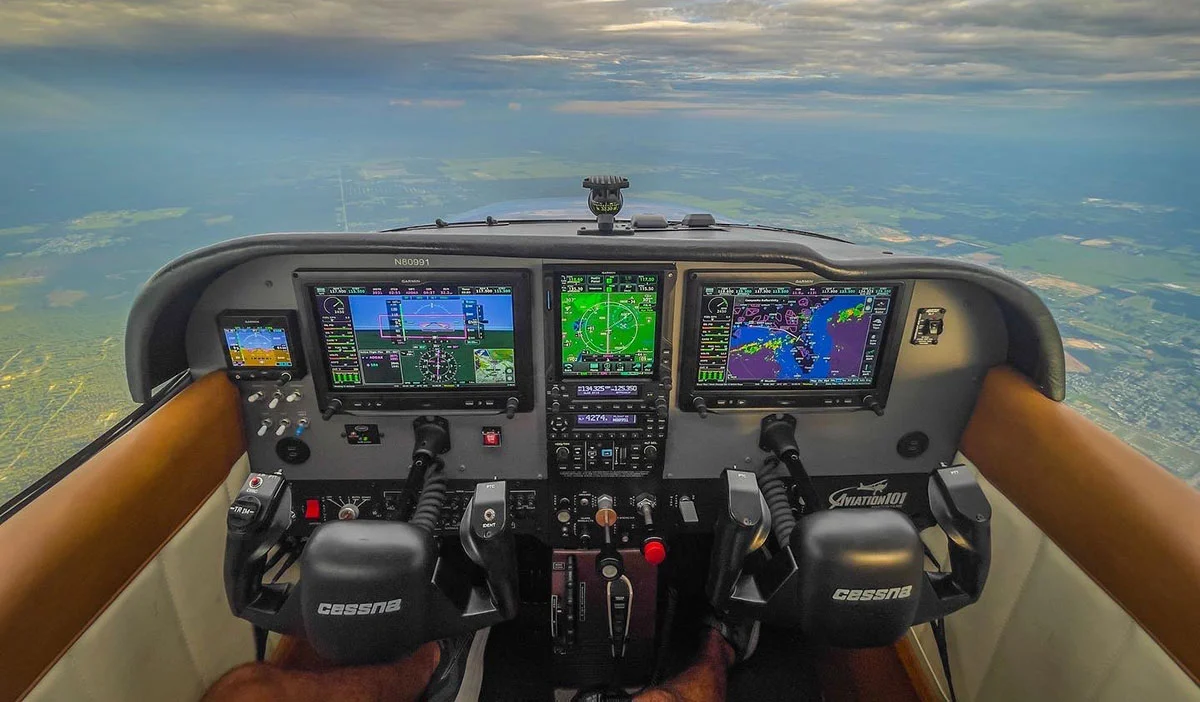
Do you want to use a dealer for a complete, professional installation experience, or do you typically work with an installer outside of the Garmin dealer network?
If you’re hoping to have your A&P or other preferred installer do the work, any of our GPS navigator series — GPS 175, GNC® 355, GNX™ 375, — or slimline radios — the GTR™ 205 and GNC® 215 — would suit your needs.
Finding the right Garmin solution to meet your navigation and communications needs is a breeze. Build the custom avionics stack of your dreams with the GPS navigator series and slimline radios, there is a Garmin solution for every pilot, every mission and every budget.
How can I reach your Customer Support team?
Email Customer Support is available at sales@flightstore.com.au. Call us on 07 5536 8694 or use our Email Enquiry Form.
What to think about when upgrading your panel?
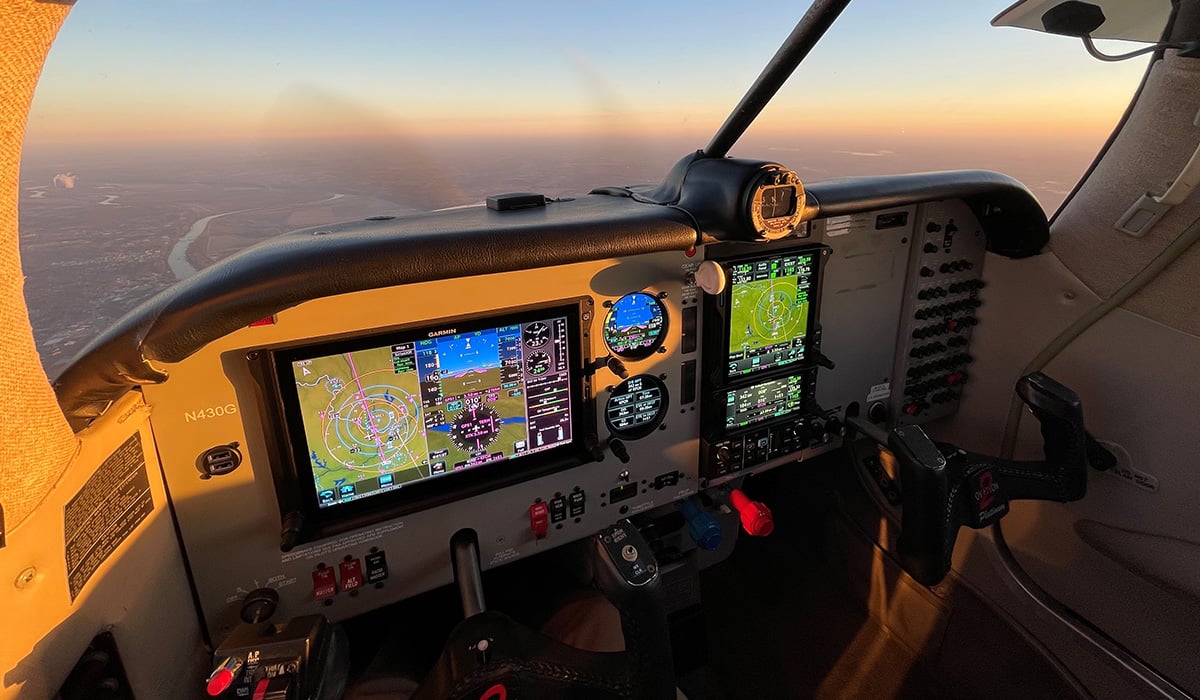
Whether you’ve just purchased your first aircraft, or your older panel needs some upgrades, deciding exactly what to buy isn’t always as simple as hitting “add to cart.” Luckily, our Flight Store Garmin sales team has been around the block a few times, and they have some considerations to keep in mind when you’re mulling over your options.
1. Your aircraft’s mission and necessary capabilities
Do you fly for a $100 hamburger every weekend? Introduce friends to aviation on a ride around town? Or do you fly serious cross-country trips in all types of weather, day and night? What you use your aircraft for will help you to determine what avionics are best for your mission. Our sales team recommends asking yourself the following questions:
Is this aircraft for personal use, for work, or for a combination of work and personal needs?
What type of weather do you plan on flying in?
How frequently will you fly your aircraft?
Once you’ve identified your mission — and the base capabilities your aircraft will need to accomplish it — it’s time to move on to the second consideration.
2. Budget
In a perfect world, money wouldn’t be an issue — but life’s not always perfect. When thinking about the budget for your upgrades, there are a couple facets to think about. Hardware and labor costs are important pieces of the puzzle.
Did a legacy system, like the vacuum system, fail on your airplane, causing an unexpected expense? You can not only replace that legacy system, but also gain capability in many instances as well. That’s money well spent.
Think about how much you’re comfortable spending and then we can help you to figure out how to get the most bang for your buck.
3. Timeline
Many panel upgrades take weeks if not months to complete. If you’re using your aircraft for business purposes, you may want to plan your install during a slower time of year. Talk with your local dealer to see what their schedule is like, and work with them to establish what you’re wanting to do to lock in your installation slot.
How can I reach your Customer Support team?
Email Customer Support is available at sales@flightstore.com.au. Call us on 07 5536 8694 or use our Email Enquiry Form.
Seven Reasons to Upgrade to Garmin’s GSB 15 USB Charger?
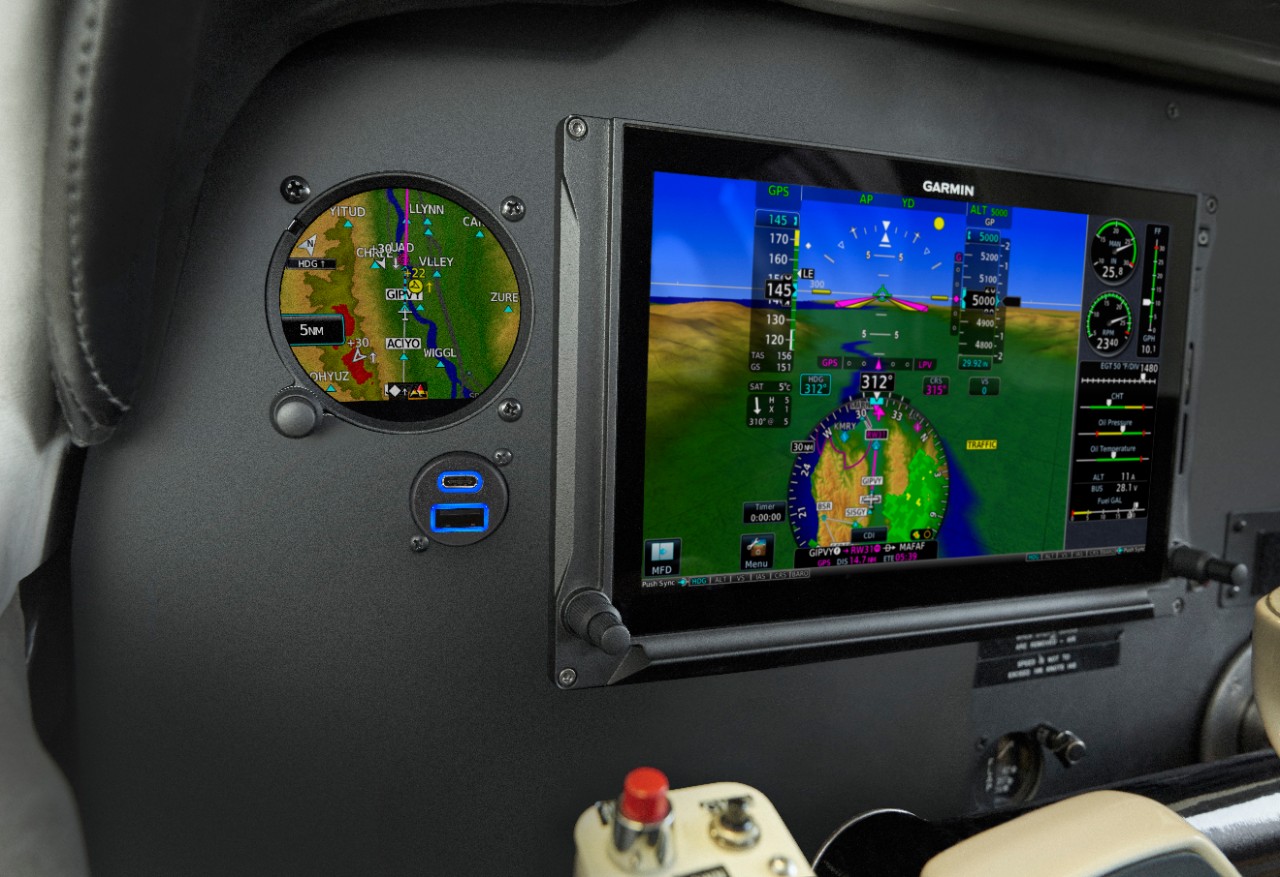
Mobile devices have become essential in-flight tools for pilots and their passengers. With enhanced charging capabilities and a host of other features, the compact Garmin GSB™ 15 USB charger ensures pilots and passengers keep their devices fully charged while working on the fly (literally) so they’re always ready for their next destination.
Here are seven reasons to upgrade to Garmin’s newest portable charger:
- Charge multiple devices/dual ports. The new GSB 15 models include a variety of USB port options — Dual USB Type-C or a combination of USB Type-A and USB Type-C — each supporting up to 27 watts of power output per port simultaneously, allowing pilots and passengers to charge most mobile devices while they are in use.
- Capability to push databases to multiple units. All GSB 15 models offer pilots the option to transfer databases to the GI 275 electronic flight instrument using a USB flash drive. Pilots can record flight data, including valuable engine indication system data and upload this information for an in-depth analysis.
- Enhanced lighting. The latest GSB 15 models feature dimmable halo lighting around each port, making plugging in your device easy and hassle-free during nighttime conditions. For optimal viewing day or night, you can utilize the lighting bus to control brightness.
- More power. Now with USB power delivery technology, the newest GSB 15 USB charger is designed to provide optimized power output for a specific device, allowing pilots and passengers to get the most out of their technology.
- Compact, lightweight design. The GSB 15 USB charger’s sleek design and options for rear and side power input connectors provide an ideal charging solution for any cockpit or cabin. Compact enough to fit a 1” cutout, its slim design makes it a suitable addition to almost any cockpit or space-constrained areas such as cabin sidewalls or armrests. Optional accessories such as GSB 15 mounting kits and decorative covers ensure a visually seamless presentation.
- Peace of mind. The GSB 15 also provides owners and operators with short-circuit and over-temperature protection for extra peace of mind.
- Ease of installation. The GSB 15 can take the place of an existing aircraft instrument hole with an optional adapter plate, and aircraft owners and operators with an existing GSB 15 will find that upgrading to a new model GSB 15 is easy for their installer by using the same connector as well as compatibility with original wiring for the new dimmable halo lighting feature.1
New models of the GSB 15 include dual USB Type-C ports or a combination USB Type-A and USB Type-C ports.
One GI 275 Is Good. Are Two Better?
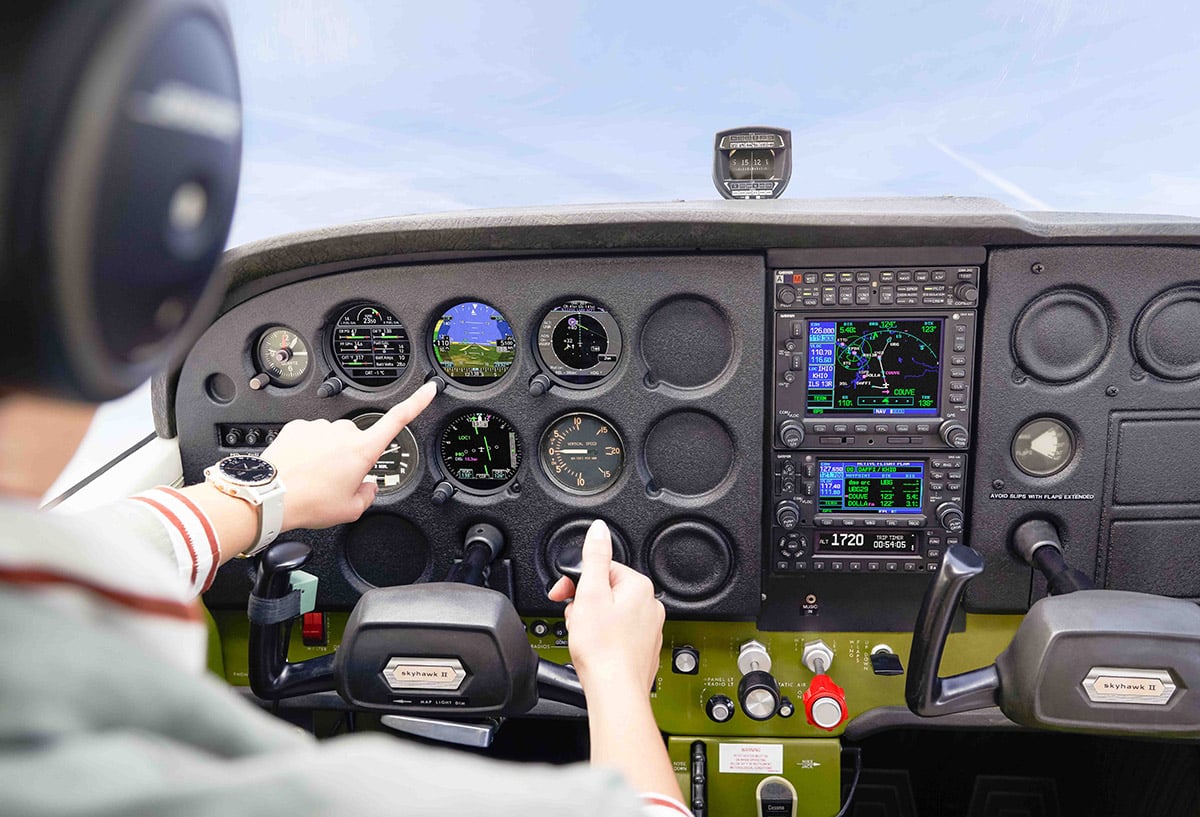
There are strict technical requirements that apply to any Avionics equipment used in Australia. Before purchasing equipment, check with a Flight Store Team Member that it meets the appropriate Australian standards and is suitable for your aircraft class and type.
How can I reach your Customer Support team?
Email Customer Support is available at sales@flightstore.com.au. Call us on 07 5536 8694 or use our Email Enquiry Form.
What's an ADS-B EC device? Is a portable all I need for my light aircraft?
Electronic Conspicuity (EC) devices
An electronic conspicuity (EC) device is an ADS-B system designed for use on light aircraft. Mostly portable devices, they are capable of transmitting and receiving ADS-B, however the majority of EC devices are ADS-B IN only. OUT devices broadcast information that enables the aircraft to be detected by other airspace users with equipment that can receive and process ADS-B IN information.
You can use an Electronic Conspicuity (EC) device such as the Sentry, Sentry Plus or Stratus 3 in non-certified aircraft.
For ADS-B transmissions to be trustworthy, it is necessary to have assurance of adequate performance. Legislation states that an EC device cannot be operated in transmitting mode in Australia unless:
- The manufacturer has made a valid declaration of capability and conformance for the device in accordance with the legislative requirements.
- The manufacturer has provided the user a statement of compliance certifying that the device meets the legislative requirements.
- The pilot in command of an aircraft that uses an EC device carries the statement or a copy of it on board the aircraft.
You must not operate an EC device at the same time as a Mode S transponder which is transmitting ADS-B messages. This is to avoid interference to the two devices caused by unsynchronised transmissions and prevent the aircraft from broadcasting inconsistent information.
- an EC device
- ADS-B IN
- a transponder together with an EC device.
Source: casa.gov.au Buying and fitting ADS-B equipment
What ADS-B is right for me?
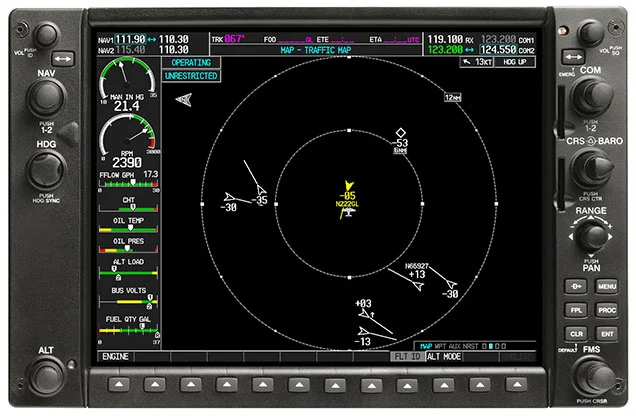
There are different types of ADS-B which offer a range of options for aircraft flying under visual flight rules (VFR).
These include:
- installed ADS-B equipment - visible to the air traffic control system and useable for air traffic separation purposes. (referred to as ADS-B)
- portable ADS-B equipment - simple devices providing you and other pilots with improved situational awareness showing local electronic traffic information but not visible to air traffic control(referred to as ADS-B EC).
What you buy depends on the type of flying you do. All options provide significant safety benefits regardless of cost or complexity of the equipment.
There are strict technical requirements that apply to any ADS-B equipment used in Australia. Before purchasing equipment, check with a Flight Store Team Member that it meets the appropriate Australian standards and is suitable for your aircraft class and type.
Read the Flight Store ADS-B Buyers Guide for all your ADS-B questions and answers.
How can I reach your Customer Support team?
Email Customer Support is available at sales@flightstore.com.au. Call us on 07 5536 8694 or use our Email Enquiry Form.
More Effectively Manage Engines, Fuel with Garmin Engine Indication System?
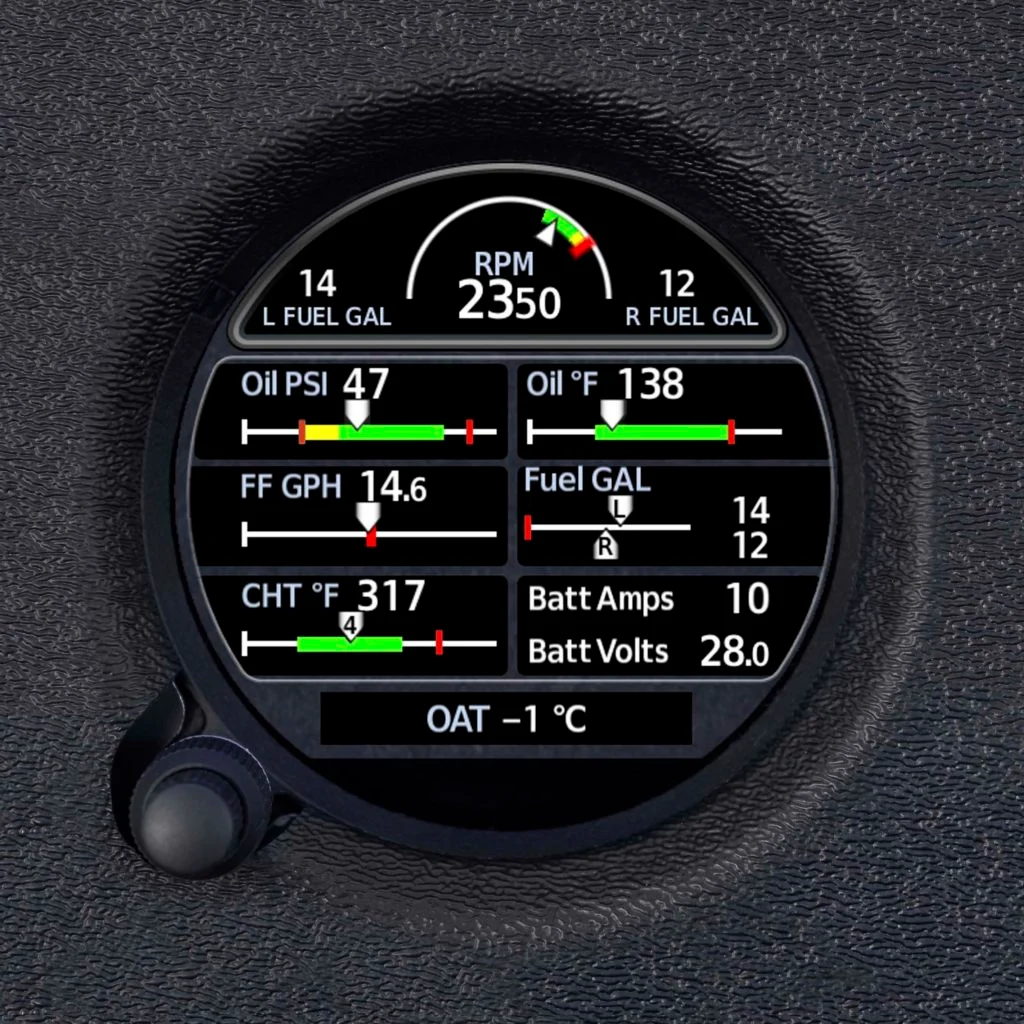
The benefits of digital engine indication systems (EIS) go far beyond replacing an aging system in your aircraft. These modern, reliable solutions can offer significant improvements over older, maintenance-prone analog instruments. They also can present crucial engine and fuel information with enhanced precision.
Streamlined displays with intuitive user interfaces can help reduce pilot workload, improve engine and fuel management, and add overall confidence in the cockpit. Our broad range of EIS solutions were designed with these principles in mind. From our compact GI 275 EIS to our larger format EIS on G3X Touch™, we have an EIS solution for nearly every aircraft type and operator budget.
GI 275 EIS: Convenient size, powerful capabilities
Don’t be fooled by the size of our GI 275 EIS. Designed to fit a standard 3-1/8” instrument cutout, this stand-alone touchscreen solution provides engine, fuel, electrical information and more in a convenient, cost-effective package. Plus, with minimal or no panel modifications required for installation, GI 275 proves ideal for aircraft owners looking to keep the classic look of their panel. It graphically displays cylinder head and exhaust gas temperatures, features lean assist mode, and monitors fuel quantity and fuel flow to estimate how much fuel, range and flight time remains.
How can I reach your Customer Support team?
Email Customer Support is available at sales@flightstore.com.au. Call us on 07 5536 8694 or use our Email Enquiry Form.



